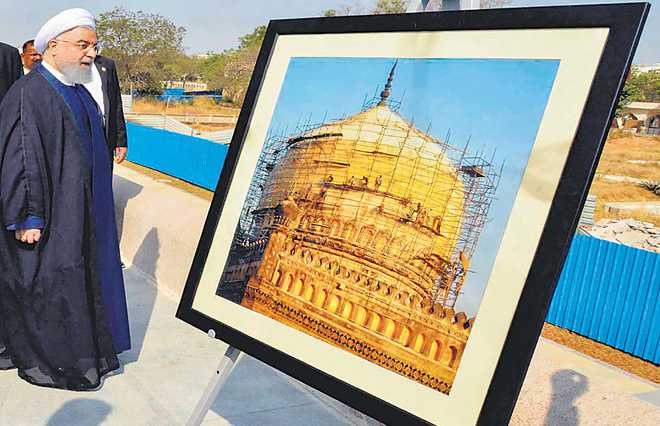Suresh Dharur in Hyderabad
AFTER decades of neglect, Qutub Shahi tombs, the magnificent medieval necropolis complex on the outskirts of Hyderabad, have got a new lease of life following a massive restoration work.
The tombs complex, built during the reign of the Qutub Shahi dynasty that ruled the Hyderabad region for 170 years in the 16th-17th centuries, has been thrown open to public after a five-year restoration works done by the Geneva-based Aga Khan Trust for Culture (AKTC).
The park area, comprising 25 monuments, was allowed for public viewing after completion of the first phase of the restoration works that included removal of modern materials such as new concrete, restoration of authentic lime mortar, structural repairs, restoring missing stone elements and laying of granite blocks to prevent water seepage. It is one of the most ambitious conservation projects undertaken in the country.
Spread over 108 acres, the tomb complex is said to be the only necropolis in the world where all the sultans of a dynasty, barring one ruler, are buried.
The Qutub Shahi tombs are one of the most significant medieval necropolises with 72 structures within its complex, encompassing 40 mausoleums, 23 mosques, five step-wells and water structures, a hamam (mortuary bath), pavilions, garden structures and enclosure walls. It is in the race for Unesco’s World Heritage tag.
Despite being a major tourist attraction, the complex had suffered neglect by the successive governments for decades. An MoU for a integrated conservation and landscape restoration project at the tomb complex was signed in January 2013 by the Andhra Pradesh State Department of Archaeology and Museums, the Quli Qutub Shah Urban Development Authority and the AKTC. It is a 10-year project, billed as the most thorough and scientific restoration exercises undertaken in the history of Indian monuments.
The signing of the agreement was preceded by a year-long documentation programme, where each of the 72 structures within the tomb complex — Deccan Park area — has been documented and conservation needs established. Topographical surveys of the entire site have also been undertaken and a landscape master plan prepared.
Standing testimony to Indo-Persian architecture, the majestic monuments, located on the outskirts of Hyderabad, are a major tourist attraction. The ravages of time have taken a toll on these heritage sites. The conservation works at the tombs were undertaken by master craftsmen using traditional tools, building techniques and traditional materials respecting the intention of the original builders. A significant portion of the site would be developed as an ecological zone with plantations of local flora to encourage birds as well as revive the historic water bodies.
Unlock Exclusive Insights with The Tribune Premium
Take your experience further with Premium access.
Thought-provoking Opinions, Expert Analysis, In-depth Insights and other Member Only Benefits
Already a Member? Sign In Now










